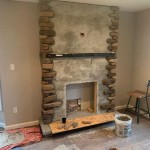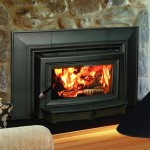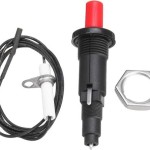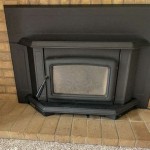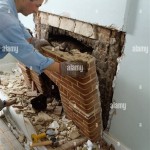Fireplace No Chimney: Unlocking the Warmth Without the Hassle
Fireplaces have long been synonymous with cozy ambiance and winter warmth, but traditional wood-burning fireplaces require a chimney, which can be costly and inconvenient to install. Fortunately, advancements in fireplace technology have introduced fireplace no chimney models that offer the same warmth and charm without the structural constraints.
Fireplace no chimney operate using various fuel sources, including electric, gas, and bio-ethanol. Electric fireplaces utilize a heating element to generate heat and create realistic flame effects, while gas fireplaces use natural gas or propane to produce a more authentic flame. Bio-ethanol fireplaces, on the other hand, burn a clean-burning renewable fuel and emit minimal smoke or fumes.
Advantages of Fireplace No Chimney
- Convenience: No chimney is required, eliminating the need for complex installation and maintenance.
- Versatile Placement: Fireplace no chimney can be placed virtually anywhere in a room, including against a wall or even freestanding in the center.
- Safety: No chimney means no potential for creosote buildup, which can cause chimney fires. Many fireplace no chimney models also feature safety features like automatic shut-offs and tempered glass to prevent burns.
- Energy Efficiency: Electric fireplace no chimney can be highly energy-efficient, using minimal electricity to generate heat, while gas fireplaces can be more efficient than traditional wood-burning models.
- Low Maintenance: Fireplace no chimney require minimal maintenance compared to traditional fireplaces, with no need for chimney cleaning or wood storage.
Choosing a Fireplace No Chimney
When selecting a fireplace no chimney, consider the following factors:
- Fuel Source: Decide on the fuel source you prefer (electric, gas, or bio-ethanol) based on your budget and heating needs.
- Heat Output: The heat output of a fireplace no chimney is measured in British Thermal Units (BTUs). Determine the appropriate BTU requirement for your room size.
- Size and Style: Choose a fireplace no chimney that fits the dimensions and style of your room, available in various sizes and designs.
- Features: Consider additional features such as remote controls, flame intensity adjustability, and safety features.
- Installation: Electric fireplaces no chimney can be installed in most homes, while gas fireplaces require professional installation by a licensed plumber.
Conclusion
Fireplace no chimney offer an innovative and convenient alternative to traditional wood-burning fireplaces. With their versatility, safety, and energy efficiency, they bring the warmth and ambiance of a fireplace to any home without the hassle of a chimney. By considering the factors mentioned above, you can choose the perfect fireplace no chimney to enhance the comfort and style of your living space.

Install A Fireplace Without Chimney Ventless

Fires Choices For Homes Without Chimneys Wakefords Fireplaces And Stoves

Do You Need A Chimney For Fireplace Direct Fireplaces

No Chimney Problem Blog

I Build Having No Chimney Is Barrier

How To Vent A Gas Fireplace Without Chimney Vertical Care

Do Gas Fireplaces Need A Chimney Dreifuss
:max_bytes(150000):strip_icc()/ventless-gas-fireplaces-4160746-hero-f9d4bdcd9bd446eb84406de306f790ba.jpg?strip=all)
How To Pick Out A Ventless Gas Fireplace

Do You Need A Chimney For Fireplace Direct Fireplaces

Can I Have A Stove Without Chimney Stovax Gazco
Related Posts


